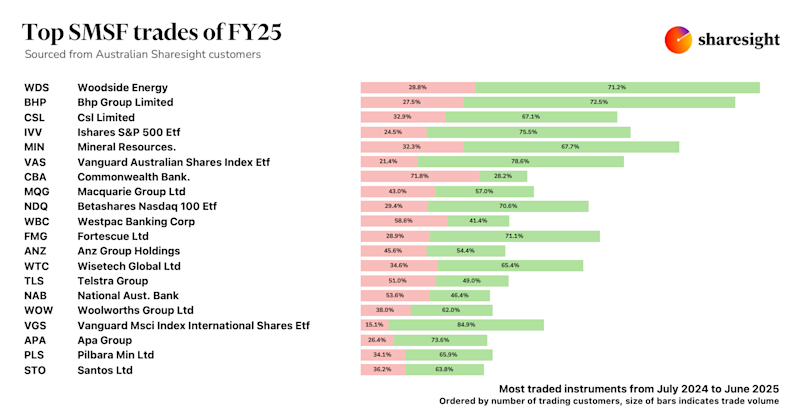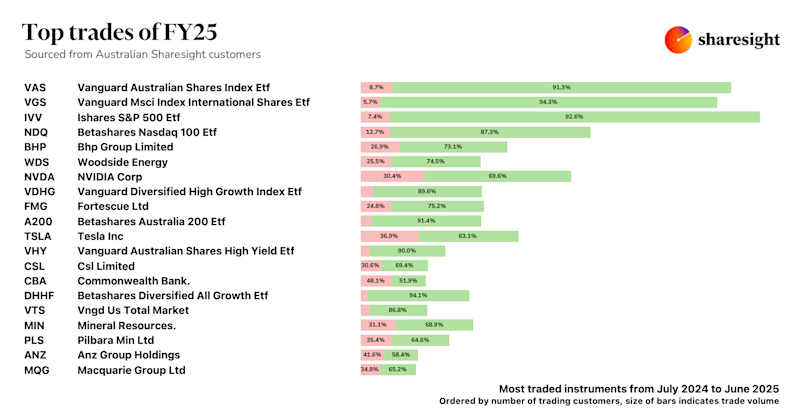Why does finance hate technology?
You’d be hard-pressed to find an industry less affected by technology than finance. Or should we say more affected given its defensive posture? Whether it’s low-level lending or investing, things are still paper-based and run on bankers’ hours. Recently, Sharesight opened an online brokerage account for testing purposes and we had to go into the bank branch to finalise setup. After being pitched a credit card, a home loan, and a savings account, we huffed out after 40 minutes of pain (and still haven’t placed a trade).

At least this was entertaining
A recent article in The Telegraph (UK) provides a snapshot on the state of play:
Finance is one of the few areas that technology companies, which are defined by their almost limitless ambitions, have made few inroads in. Although internet and mobile banking have become must-have services, the vast majority of customers continue to favour the high street brands that have existed for decades. While the internet has changed many aspects of media, retail and communications almost beyond recognition, areas of lending, insurance and investing are unchanged from 20 years ago.
James Titcomb, The Silicon Valley of Fear
Indeed the only areas of improvement we’ve seen are in everyday transaction accounts. Most of the major banks’ mobile apps are very good, as is peer-to-peer money transferring. PayPass is also a convenient development. But in the States, for example, paper cheques are still widely used for recurring payments. Waiting seven days for a cheque to clear puts a bit of a crimp in your cash flow.
The old-school areas of funds management and financial advice remain the most unchanged save for a few website facelifts here and there. This is a shame and an opportunity squandered. By using technology, investment companies could be targeting young people who are just beginning to invest and tech-savvy folks already in retirement, a.k.a. the “Silver Surfers.”
Scaled advice, for example, holds promise. Our partners at Stockspot have already put something similar in motion. Scaled advice companies offer online financial advice, using algorithms to select an appropriate mix of investments based on an investor’s personal data.
Orwellian this is not. Truth be told these algorithms are very similar to what the average financial planner would recommend based on a risk profiling engine, but a hell of a lot cheaper (fees being the best predictor of future returns). By looking at a list of investment options, scaled advice providers work out the best mix of investments considering salary, returns, risk, fees, and client expectations. If applied to index funds or ETFs, this model is hard to beat for young investors looking to build up core investments.
Specifically, we think this model has huge potential for industry super funds, in which there’s already a direct relationship with the end client and where commissions to intermediaries less of a factor. If clients are given a decent range of investments to choose from, that’s even better. Australian Super’s Member Direct plan being a prime example. They allow clients to invest in any company in the ASX 300 and a range of ETFs. Adding a scaled advice option on top of this would make sense. Paying a tiny per annum fee for a recommended investment mix and automatic rebalancing sounds like a fair deal to us.
An inverse product could be applied to those people who are in retirement. Why don’t asset management companies build a product that would help people find the right “glide-path?” Chances are, people could leave funds invested longer (increasing AUM fees, optimising tax, etc.) versus cashing out their entire nest egg in one go, thereby ending their relationship with the financial institution.
On a visit to a US-based financial planner last year at one of the world's largest banking institutions (30,000+ financial planners), a Sharesight employee enjoyed the following exchange:
Adviser: "Use Mint.com to organise your spending habit info and then email me your login details, but make sure you send them to my personal email address"
Sharesight employee: "Why? You guys don't have anything better in-house to track that stuff down?”
Adviser: "Ha! Our technology sucks. Take a look at this screen."
The adviser proceeded to turn his computer monitor, which showed an interface that looked like MS-DOS.
Instead, this person has shared his Sharesight portfolio with the adviser, thereby eliminating the need to track down his investment holdings all over again. Plus, there's no need to awkwardly share what should be private login credentials with someone else.
We can’t change the entire industry overnight, but we can empower investors to take an important first step: freeing their portfolio data.
FURTHER READING

Top SMSF trades by Australian Sharesight users in FY24/25
Welcome to our annual Australian financial year trading snapshot for SMSFs, where we dive into this year’s top trades by Sharesight users.

Top trades by Australian Sharesight users in FY24/25
Welcome to the FY24/25 edition of our Australian trading snapshot, where we dive into this financial year’s top trades by Sharesight users.

Morningstar analyses Australian investors' top trades of FY25
In this article, Morningstar reviews the key events of FY25 and shares three stocks their analysts are watching closely.